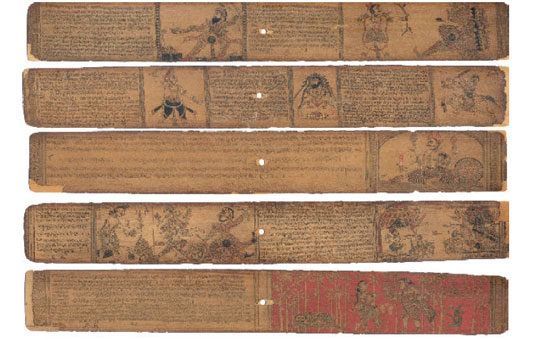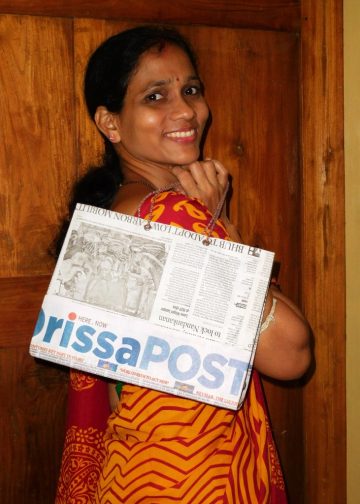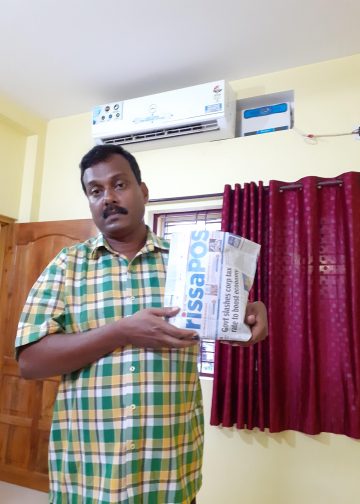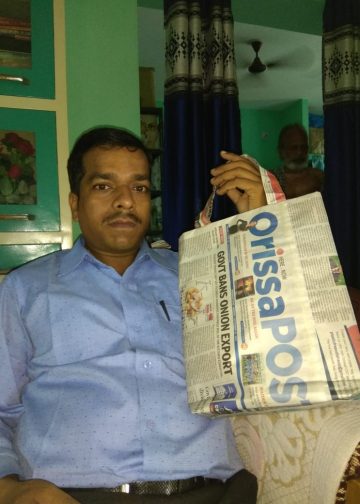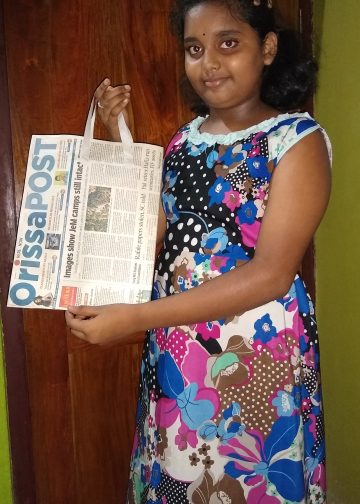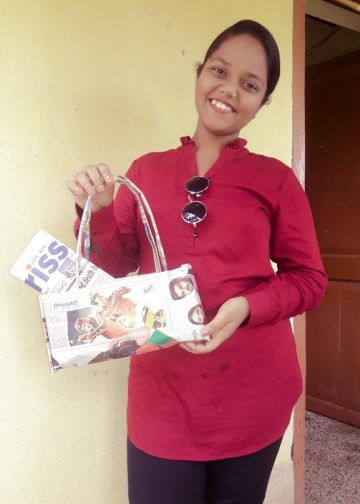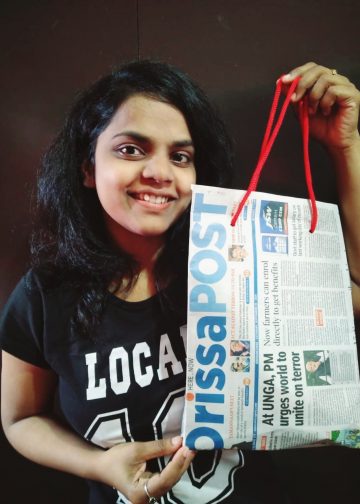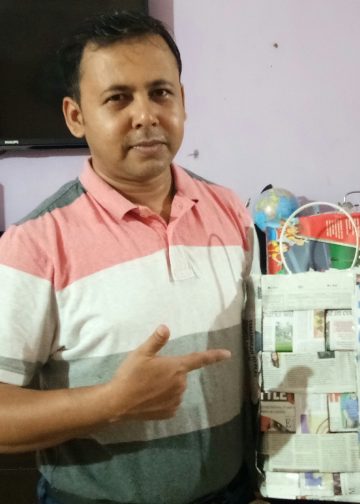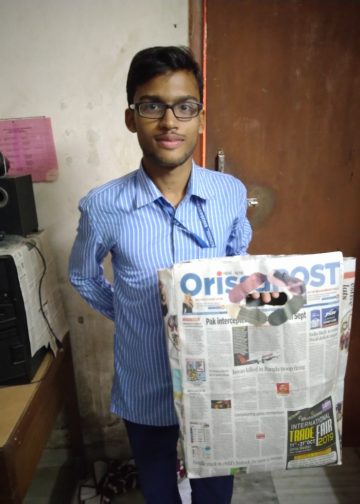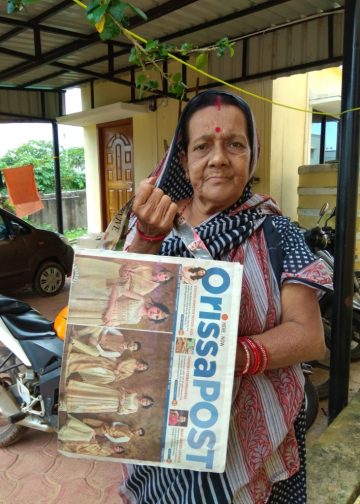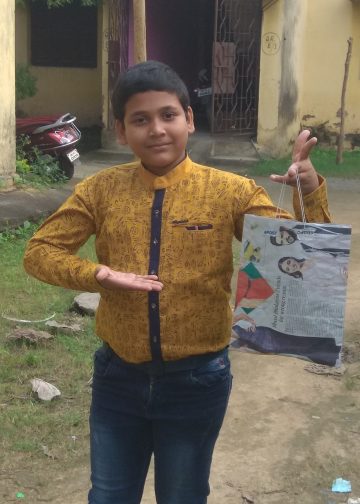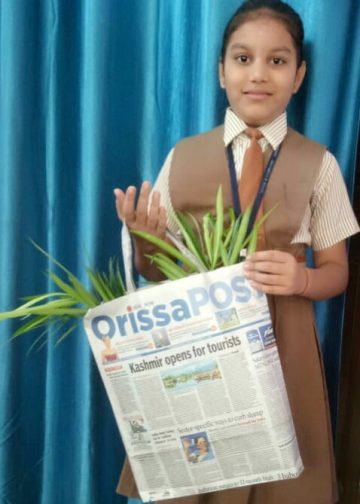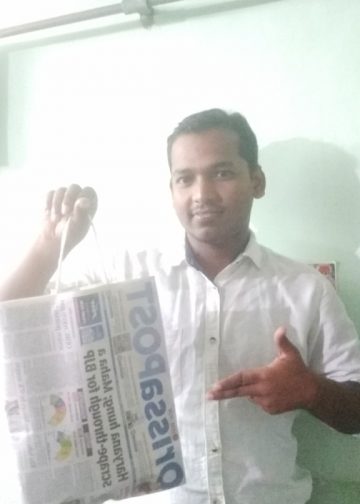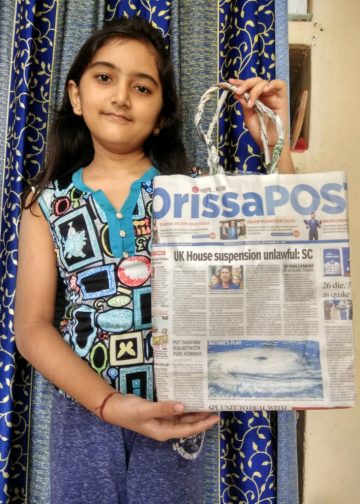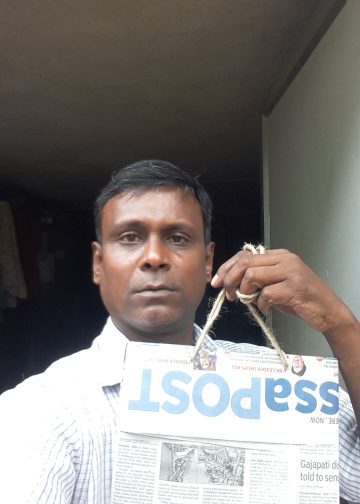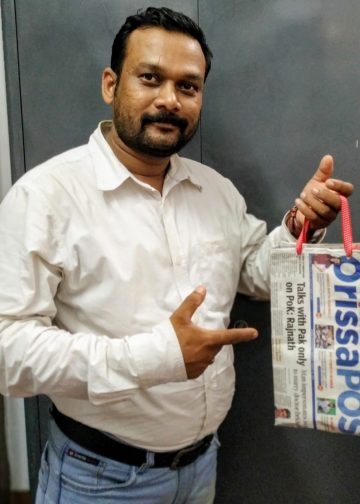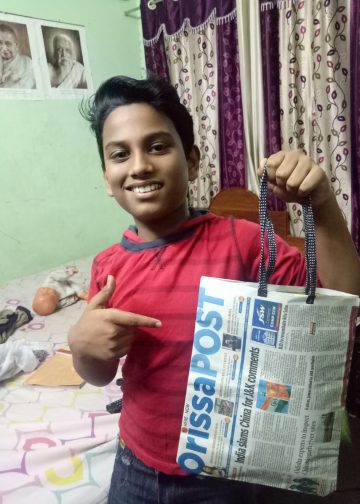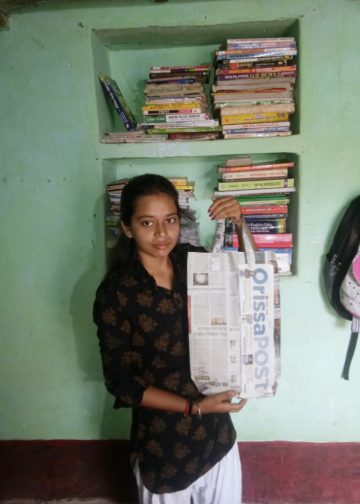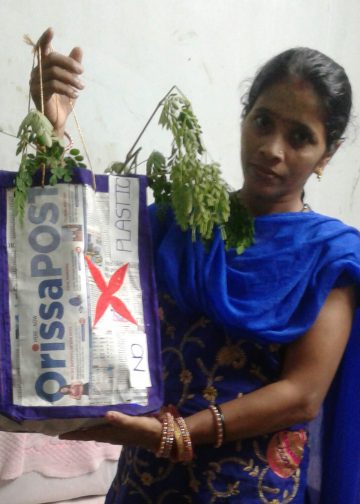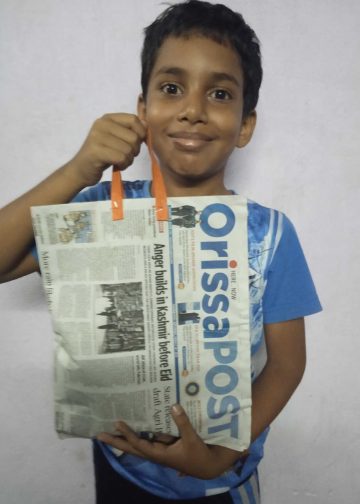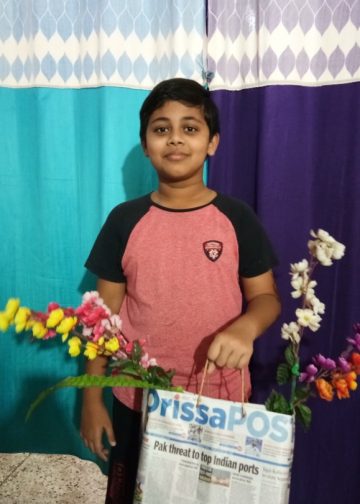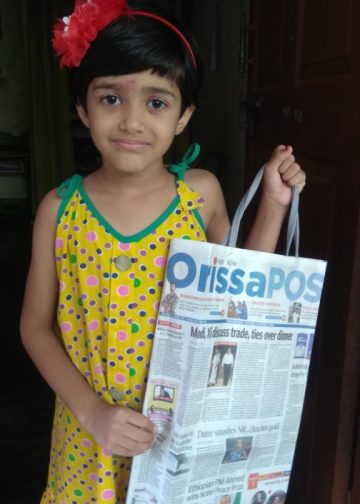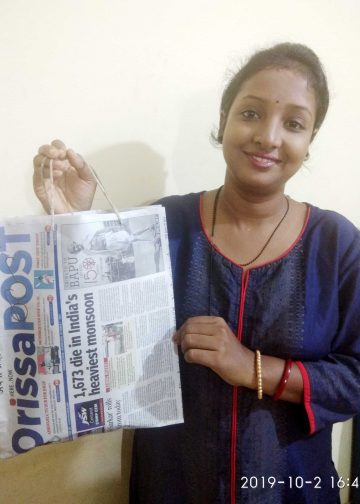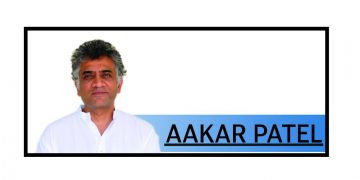As examples of the conversion of verbal works of art into lines and paintings, the illustrated manuscripts of Odisha occupy a unique place. The history of such transformative representations of art in Odisha is yet to be traced in a coherent manner. These drawings engraved with iron stylus on palm leaves are painted and filled with colours prepared with natural ingredients. If one studies the style of paintings and the representation of ‘bhava’ in them, the similarities with Odishan architecture and sculpture can be traced well.
From such a perspective, the composition of illustrated manuscripts may be said to have been contemporaneous with the practice of stone engravings in the temples of Lingaraj (Bhubaneswar), Srimandir (Puri), Sun Temple (Konark) and Rajarani Temple (Bhubaneswar). It might have been that the artists drafted their artistic thoughts on leaves and then translated the thoughts in stone. Whereas the leaves were prone to decrepitation because of air, heat, water and insects, the stone carvings could withstand the travails of time and hence preserve the ancient art for all ages. Therefore, the illustrated manuscripts are the representatives of the tradition introduced above.
Of all the rich and rare treasures of the Odisha State Museum, the best and the most unique is the large collection of palm leaf inscriptions which has the largest such collection not only in the country but perhaps in the entire world. The collection includes a variety of items like manuscripts of ancient texts both illustrated and non-illustrated, covering a wide variety of subjects like poetry, music, astrology, philosophy, mathematics and medicine etc., some rare etchings and paintings, calligraphed palm leaf wall pieces, garlands, fans and items in miscellaneous other shapes. In itself, the collection constitutes a most comprehensive record of the history and culture of the state spreading over several centuries and therefore is an excellent source material for research and scholarly studies. It is difficult to determine the exact place and time of the origin of the art of palm leaf inscriptions but it is well known that in the Vedic times there was no system of writing and the Vedas were disseminated through the word of mouth and therefore were called sruti. The earliest forms of writing known to us are rock edicts and among these, the most famous Asokan rock-edicts date from the third century BC.
However, from these rock edicts no evidence is available regarding the prevalence of palm leaf writing or about the use of iron stylus. However, from one of the copper plate inscriptions of Sailodbhava dynasty, it is learnt that the script was first written on a palm leaf and then transcribed on to the copper plate as a copy. Noted historian Satyanarayan Rajguru refers to this in his book on the origin of Odia script and therefore we can safely assume that by the sixth century AD, the art of palm leaf writing was well established. There are also many sculptural evidences regarding the use of palm leaf manuscripts.
The earliest of these can be found in the Parsurameswara temple at Bhubaneswar which is believed to have been built in the seventh century. We also find similar representations in the nearby Mukteswara temple of 10th century AD and also the famous Sun temple of Konark of the 13th century. Another important sculptural evidence is an 11th century image of Buddha found at Haripur near Khurda Road railway station. In this sculpture, one finds in the pedestal a scholar studying some holy scripture in the shape of a stringed palm-leaf manuscript placed on Vyasasana.
In a sculpture from the Jagannath temple at Dharakot one can find a beautiful presentation of a scribe writing with the stylus on a palm leaf. It is also interesting to note that the art of palmleaf inscription is used even today for recording the horoscope of newborn babies. Similarly, the invitation sent to the deities, known as ‘diyannimantrana’, as well as the ceremonial invitation to the bride-groom from the bride’s family is generally written on palm leaf in Odisha.
However, by its very nature palm leaf cannot be preserved over a long period and for this very reason there is a tradition of copying manuscripts before they reach an irreparable condition and after copying, the older manuscripts are destroyed. The earliest dated palm leaf manuscript available in Odisha State Museum is only five centuries old.
This manuscript is a copy of the poetic work Abhinava Gita Govinda by Kavi Chandra Ray Dibakar Mishra and was inscribed by one Sri Sridhar Sharma and the date of the manuscript has been established as 6th April, 1494. The poet has dedicated the composition to Gajapati King Sri Purushottam Deva. This is an imitation of the more famous 12th century Sanskrit lyric Sri Gita Govinda by the first major Odia poet Jayadeva. Although we have quite a large number of collection of palm leaf copies of Jayadeva’s work, none of them is older than the Abhinava Gita Govinda.
It may be mentioned here that by 15th century the art of palm leaf writing had attained great excellence and was also quite widespread. The next major literary work which spread through copies of palm leaf writing was the Sarala Mahabharata or the Odia rendering of the Sanskrit epic by Vyasa. This epic work which was written during the reign of Kapilendra Deva of the 15th century marks the full flowering of the Odia language. Next comes the Bhagabata of Atibadi Jagannatha Das which is not only the first Odia rendering of the Sanskrit original but also the first in entire Eastern region. It may be of interest to note that the reading of chapters of this holy scripture was a daily ritual in the homes of Odias and also in the village gatherings. In fact, the scripture was considered to be an incarnation of God and was installed ceremonially in our villages in a separate village-hall called the Bhagabata Tungi where the villagers gathered together to hear readings from the scriptures.
The seat of the scripture known as Bhagabata Gadi, literally meaning the throne of Bhagabata, is found even today among the more orthodox Odia families and traditional villages. There was a time when it was said that there was no Odia house without a copy of Bhagabata and there was no village without a copy or two of Sri Gita Govinda. Thus it can be safely said that palm-leaf writing was intimately and inextricably intertwined with the cultural heritage of the state.
As late as the beginning of 20th century, several lakhs of these manuscripts were still available as mentioned by Prof. Macdonalds and Hara Prasad Sastri regarding their visit to Puri in 1916. (Ref. to Rev. J. Long’s article in the Journal of Asiatic Society and also Sri M. M. Chakravarty). Not many of these numerous manuscripts have survived but quite a sizeable number have been procured and preserved in the State Museum and the collection today exceeds 50,000 in number covering about 15,000 titles.
The first systematic efforts for documentation of the available palm leaf manuscripts was started in the years 1935-1938 under the auspices of the then Director of Public Instructions. After detailed survey of the manuscripts available in the state, a catalogue was prepared, of which nine volumes have been preserved in the State Museum, although the total number of volumes was much larger. The actual collection of the palm leaf manuscripts however started much later in the year 1950 when the Museum started a separate section for the palm leaf manuscripts. Over the period of three decades however the Museum has acquired an enviable collection of 50,000 manuscripts.
Mention must be made here of the great contribution of the Late historian Kedarnath Mahapatra who was the first curator of the Manuscript Section of the museum and who spared no efforts to organise the collection and bring out its importance. This vast collection of the manuscripts has been organised into 26 sections, namely: 1. Veda, 2. Tantra, 3. Sanskrit Puranas, 4. Religious texts, 5. Philosophy, 6. Astrology, 7. Ayurveda (Medicinal texts), 8. Lexicon, 9.Grammar, 10.Sanskrit poetry, 11.Poetics, 12.Music, 13.Crafts, 14.Mathematics, 15.Paper manuscripts (Odia), Paper manuscripts (Sanskrit), Manuscripts in Bengali Language, 18.Manuscripts in Sanskrit, 19. Manuscripts in Sanksrit Bengali script, 20. Manuscripts in Telugu, 21.Manuscripts in Persian, 22.Odia poetry, 23. Odia Puranas, 24. Odia Prose compositions, 25.Odia historical poems, 26.Illustrated manuscripts.
Excerpts from an article by Dr Bhagyalipi Malla, former Superintendent, Odisha State Archives, Bhubaneswar, in the Odisha Review

